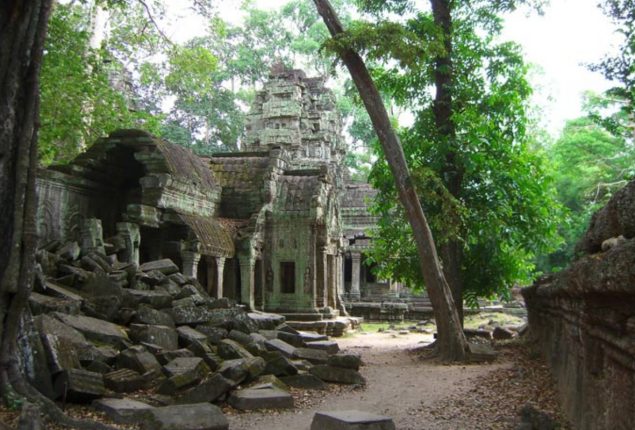After a severe drought, an ancient city in Iraq was discovered
The Bronze Age city, which had been swallowed by the Tigris River...

Massive ancient city found underneath the forest of Amazon
Hidden for thousands of years by lush vegetation, researchers have uncovered a massive ancient city in the Amazon, reshaping our understanding of the region’s history.
An astonishing network of roads and canals connected houses and plazas in the Upano area in eastern Ecuador.
The society thrived in the shadow of a volcano, which, while creating fertile soils, may have ultimately led to its demise. Despite prior beliefs that people in the Amazon only lived nomadically or in small settlements, this discovery challenges those assumptions.
“This is older than any other site we know in Amazon. We have a Eurocentric view of civilization, but this shows we have to change our idea about what is culture and civilization,” says Prof Stephen Rostain, director of investigation at the National Centre for Scientific Research in France, who led the research.
“It changes the way we see Amazonian cultures. Most people picture small groups, probably naked, living in huts and clearing land – this shows ancient people lived in complicated urban societies,” says co-author Antoine Dorison.
Archaeologists estimate that people inhabited the city around 2,500 years ago, maintaining a presence for up to 1,000 years. While accurately determining the population at any given time is challenging, scientists suggest it ranges from tens of thousands to possibly hundreds of thousands.
Combining ground excavations with a survey of a 300 sq km (116 sq mile) area using laser sensors flown on a plane, archaeologists employed LiDAR technology to identify remains of the city beneath the dense vegetation.
This technology uncovered 6,000 rectangular platforms, each measuring about 20m (66 ft) by 10m (33 ft) and standing 2-3m high.
People arranged many of these structures in groups of three to six units around a plaza with a central platform, believing them to be homes, while others served ceremonial purposes. At Kilamope, one complex featured a 140m (459 ft) by 40m (131 ft) platform, created by cutting into hills and forming an elevated earth platform.
The city’s layout included a network of straight roads and paths connecting numerous platforms, with one road extending over 25km (16 miles). Dr. Dorison highlighted these roads as the most remarkable aspect of the research.
“The road network is very sophisticated. It extends over a vast distance, connecting everything, there are right angles, which is very impressive,” he says, explaining that it is much harder to build a straight road than one that fits in with the landscape.
He believes some had a “very powerful meaning”, perhaps linked to a ceremony or belief.
The scientists also identified causeways with ditches on either side which they believe were canals that helped manage the abundant water in the region.
Catch all the International News, Breaking News Event and Latest News Updates on The BOL News
Download The BOL News App to get the Daily News Update & Follow us on Google News.